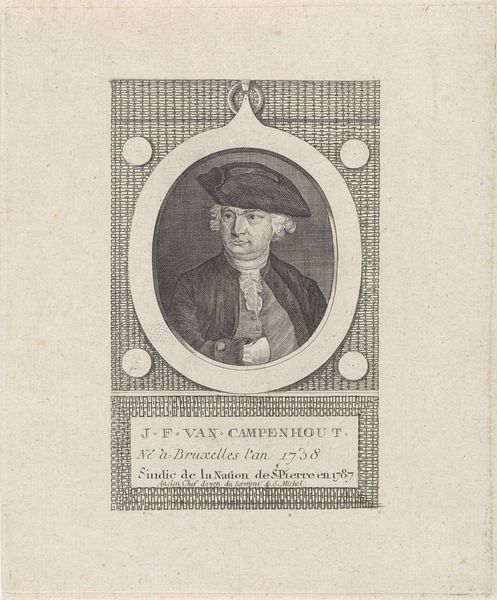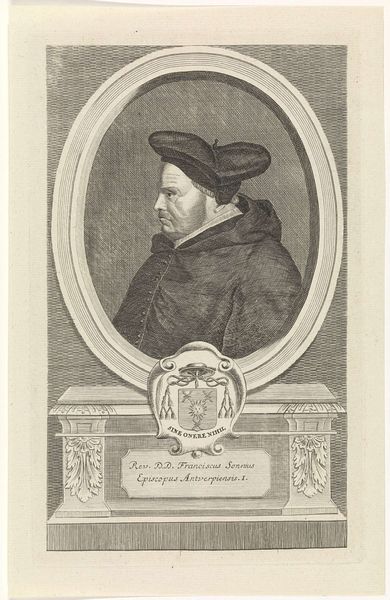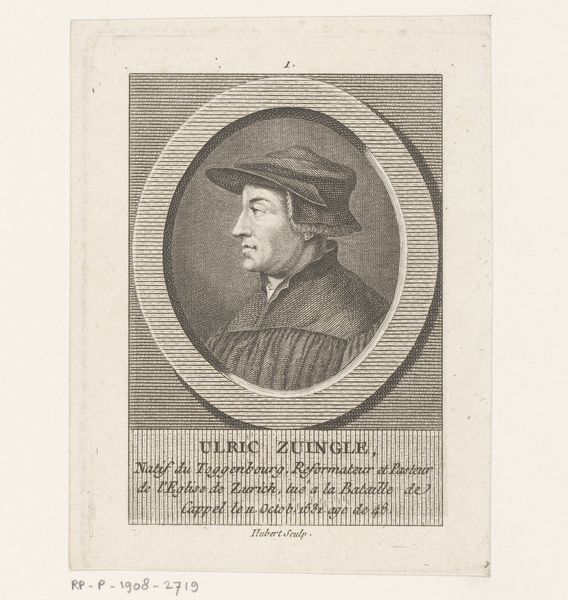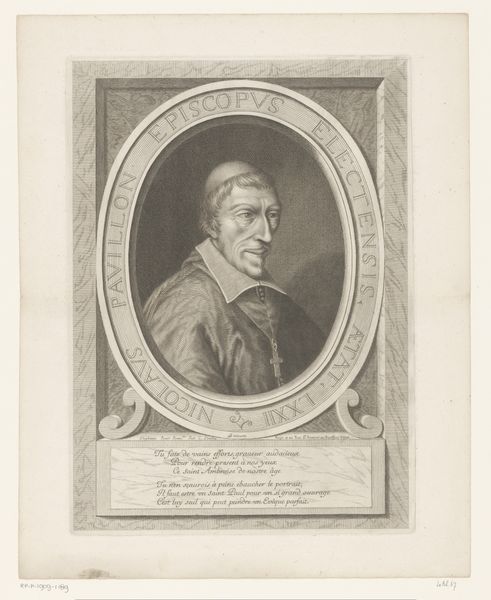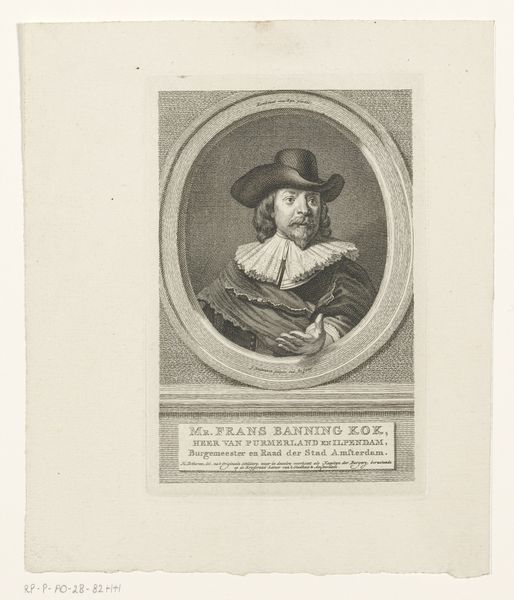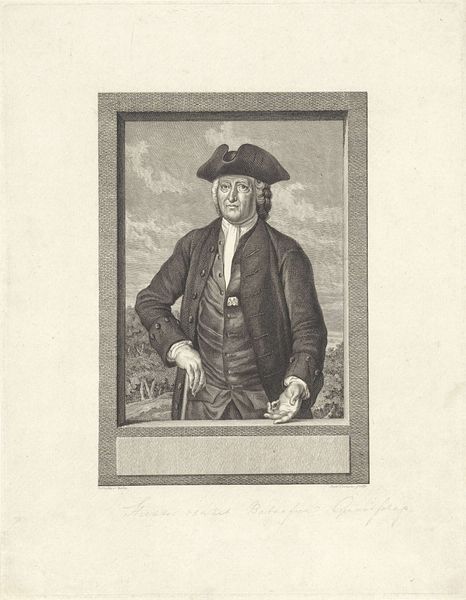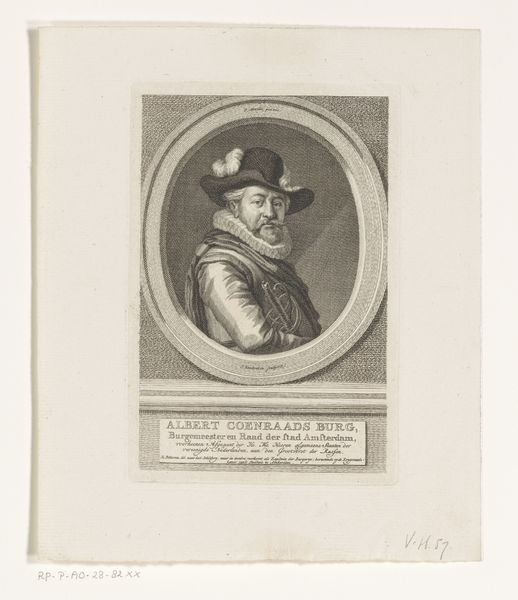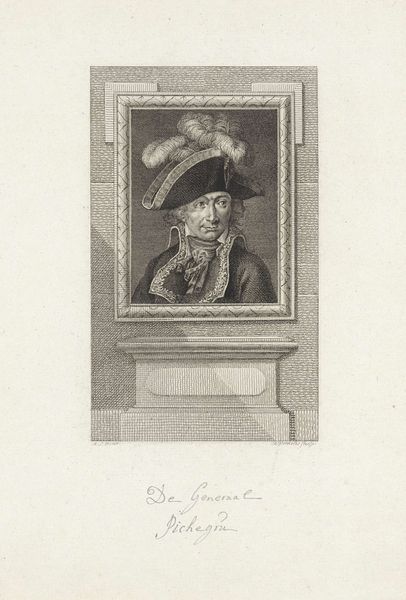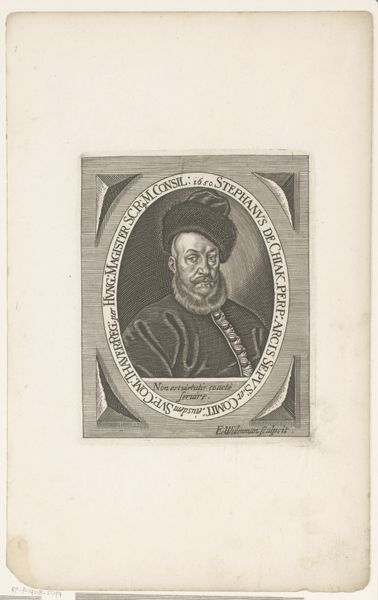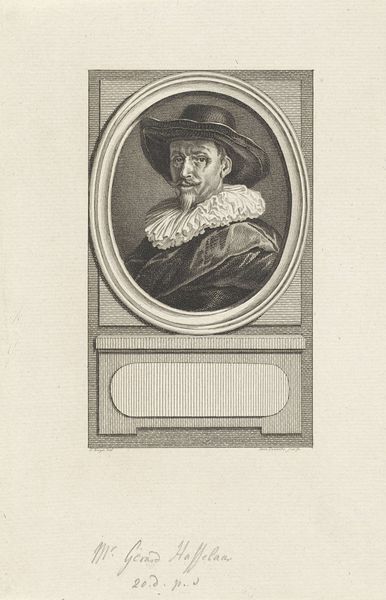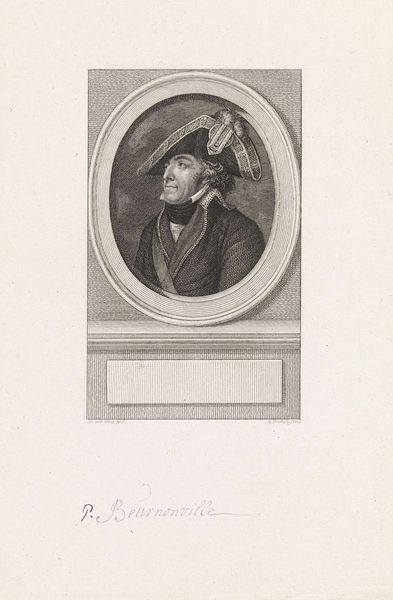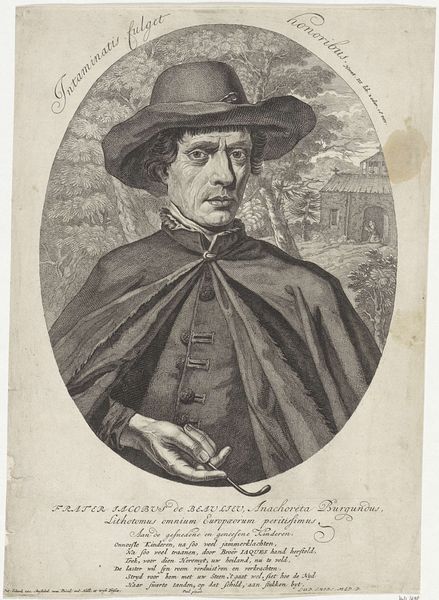
print, engraving
#
portrait
#
baroque
# print
#
engraving
#
realism
Dimensions: height 138 mm, width 83 mm, height 213 mm, width 158 mm
Copyright: Rijks Museum: Open Domain
Editor: This is "Portret van de doopsgezinde Galenus Abrahamsz. de Haan" created in 1743 by Jan Caspar Philips. It's an engraving, quite detailed. I'm struck by how meticulously rendered every aspect of the portrait is, down to the fine lines on the face and clothing. How do you interpret this work from a formal perspective? Curator: Indeed. We might consider the way the artist structures the composition. Note the oval portrait, framed by the rectangular architecture. The subject's gaze is directed slightly off-center, engaging the viewer. Consider the tonal values, transitioning smoothly from light to dark. How might these gradations contribute to the overall mood? Editor: It does create a serious and somewhat somber tone, focusing on his facial features. Are the surrounding elements like the books with Psalm verses just ornamental, or do they carry more weight in understanding the composition? Curator: Their placement is strategic. Observe how the books flank the portrait, balanced symmetrically. These elements function not just decoratively but integrally; they offer supplementary perspectives which enhance the visual reading experience. How else might symmetry affect your engagement with the work? Editor: Symmetry often lends a sense of order and perhaps stability. Here, it reinforces the importance of the subject, almost elevating him through careful visual organization. It is also important to note that although this is a print, its formal aspects are complex. Thank you. Curator: Indeed. Considering formal devices directs our engagement from recognition to contemplation. This, in turn, enables understanding of visual texts as distinct sites of meaning and significance.
Comments
No comments
Be the first to comment and join the conversation on the ultimate creative platform.
